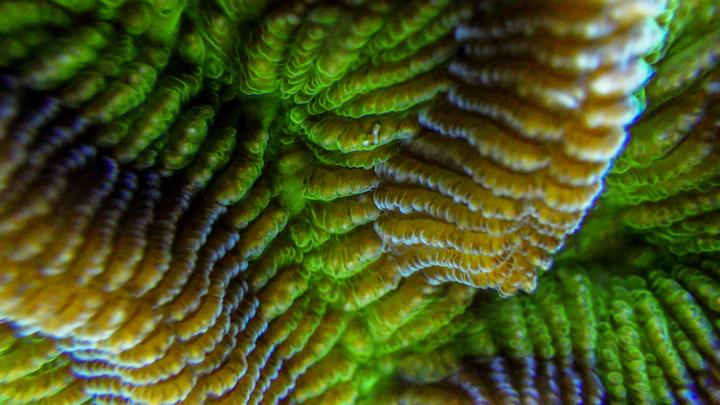The rythm of the reef - Studying the diel cycles of the coral holobiont
 Photo by Bradley Wailer
Photo by Bradley Wailer
Coral physiology is intimately dependent on diel cycles as fluctuations in light intensity and spectrum, nutrient availability, and temperature directly change the respiration and energy assimilation capabilities of the coral colony. As complex sessile organisms, corals harbor incredibly diverse microbial assemblages of prokaryotes and microeukaryotes that provide functional roles in the coral ecosphere. Corals and Symbiodiniaceae have co-evolved resulting in a symbiotic life strategy that benefits the coral host through the intracellular production of organic compounds such as carbon and oxygen. During sunlit hours, the photosynthetic efficiency has been observed to increase oxygen levels ~250% of air saturation stimulating hyperoxic environments. Corals and their aerobic microbial associates use up the available oxygen through the night, where levels have been observed to become hypoxic. Therefore, given the extreme variation in abiotic parameters, it is likely the microbial communities reflect measurable changes through diel cycles. As well, there must be cellular mechanisms that help corals adapt these extreme abiotic shifts, measurable through transcription levels.
The current study explored three scleractinian corals, Pseudodiploria strigosa, Orbicella faveolata, and Diploria labyrinthiformes through three diel cycles to explore their microbial associates, including the surround seawater, and the host transcriptional response. In short, the corals were collected in triplicate and singular 1L reference seawater samples were acquired off the leeward side of Curaçao at 6-hour intervals for three days, resulting in a total of 3 replicated diel cycles (n=36 coral samples per species and 12 water samples). DNA was isolated, amplified using the V4 region of the 16S and 18S rRNA genes, and sequenced using Illumina MiSeq 2x250bp, and RNA was sequenced using Poly-A selection/enrichment. Based on the previous research we suspect that microbial taxa will likely follow trends in abundance with respect to anoxic and hyperoxic conditions. The abiotic parameters will promote/stimulate growth in certain taxa, such as aerobic bacteria that are involved in carbohydrate metabolism, using the influx of carbon from Symbiodiniaceae for energy production through glycolysis. Additionally, during the dark hours, anaerobic organisms that rely on sulfur and methane may show increases in abundance/importance, supporting roles in sulfur metabolism such as taxa from the genus Endozoicomonas and their ability to catabolize dimethylsulfoniopropionate. Lastly, based on previous transcriptomic literature, circadian genes such as DNA photolyase genes cry1, cry2, clock, and cycle may likely show diel oscillations between night and day. Genes related to carbon metabolism and aerobic respiration will show differential expression in the latter peak photosynthesis daylit hours. Genes related to heterotrophic feeding, anaerobic respiration and hypoxia related genes such as HIF should be upregulated during the night hours.